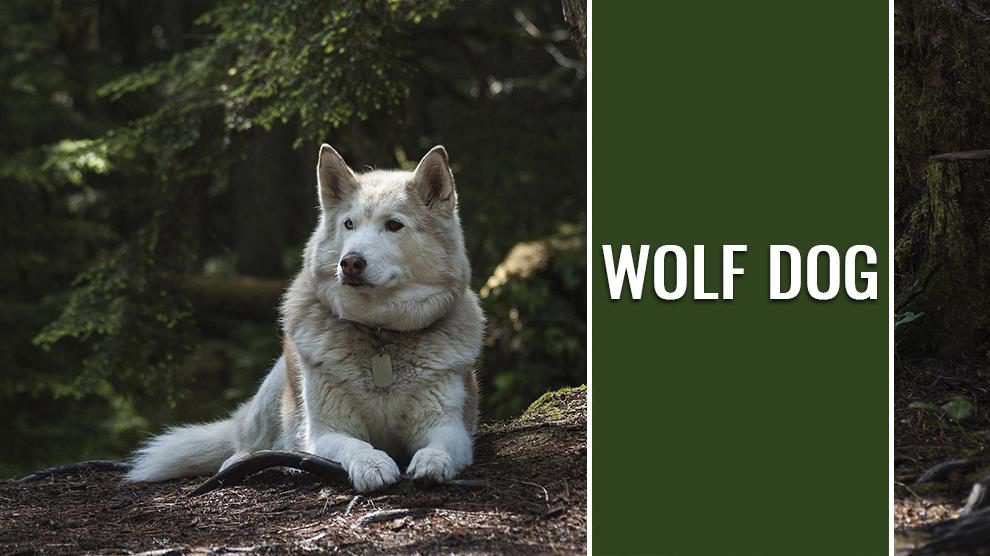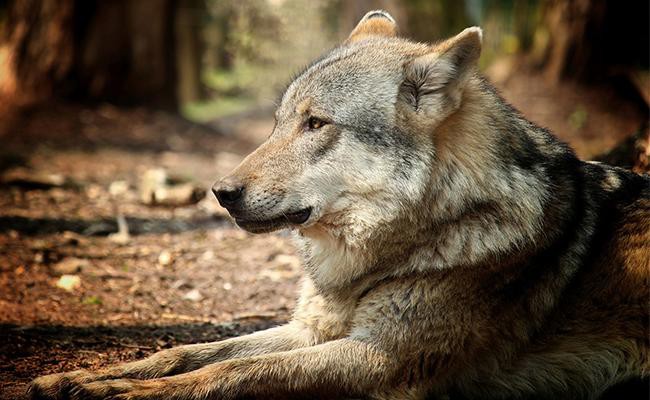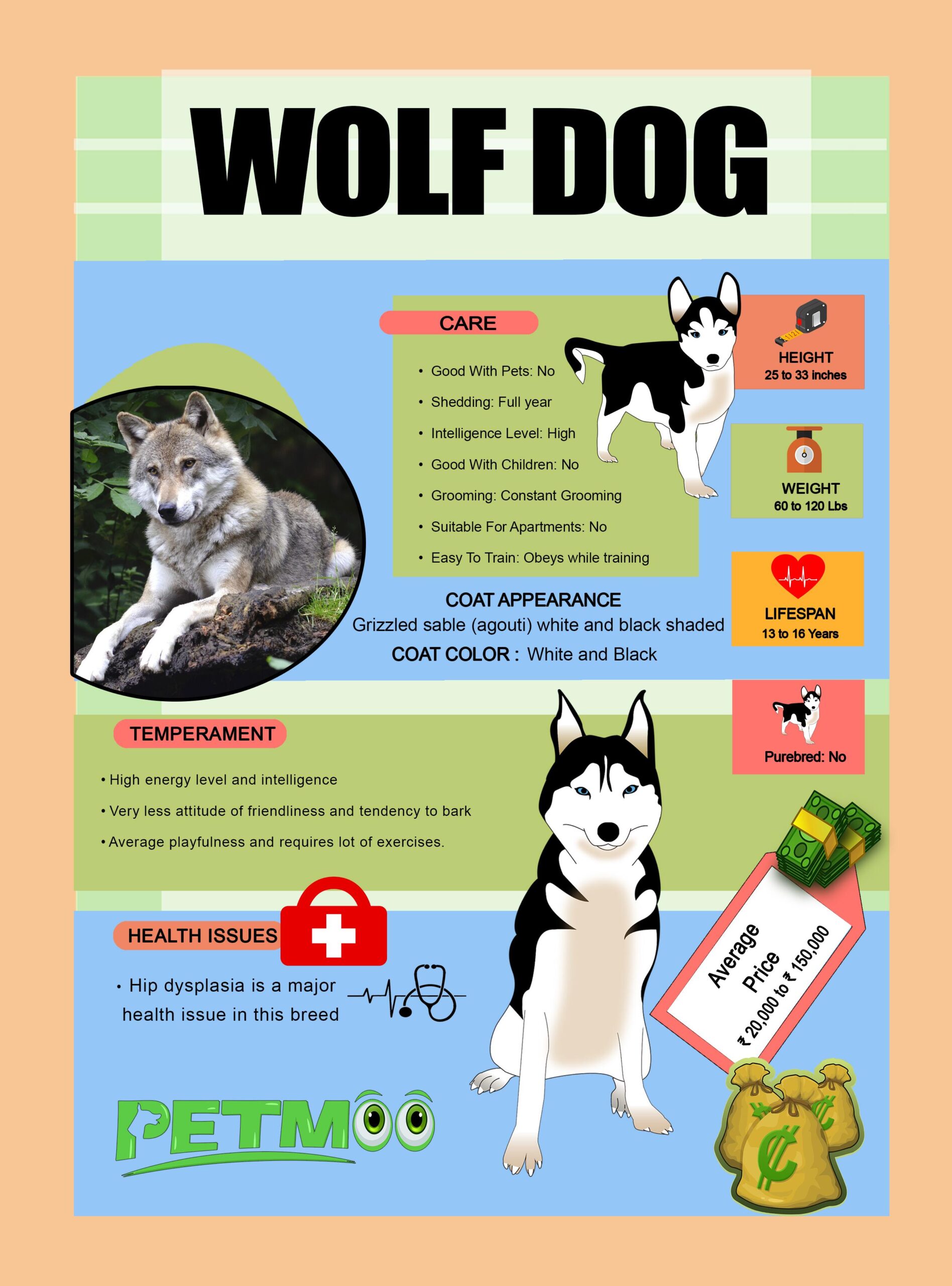Dog Pregnancy Calculator And Timeline
Wolf dogs are crossbred dogs in which one parent of the breed is a domestic dog and the other parent is a gray wolf.
Although it is named as hybrids, dogs and wolves all belong to the same canine family. Dogs are known to be the subspecies of wolves’ Canis lupus familiaris which is why dogs and wolves are crossbred.
Wolf Dog Breed Characteristics
- Origin: Wolf and Dog Crossing
- Size: Large
- Dog Breed Group: Aggressive Pets
- Purebred: No
- Lifespan: 13 to 16 years
- Height: 25 to 33 inches
- Weight: 60 to 120 pounds
- Coat Appearance: Grizzled sable (agouti) white and black shaded
- Coat Colors: White and Black
- Temperament: High energy level and intelligence. Very less attitude of friendliness and tendency to bark. Average playfulness and requires lot of exercises.
- Good With Children: No
- Intelligence Level: High
- Good With Pets: No
- Grooming: Constant Grooming
- Shedding: Full year
- Suitable For Apartments: No
- Need For Exercise: Continuous Exercise Schedules is a must
- Easy To Train: Obeys while training
- Good For First Time Owners: No. need experience in training aggressive dogs
- Health Issues: Hip dysplasia is a major health issue in this breed
- Litter Size: Usually 5 to 6 pups and exceptionally in some cases 14 to 16 pups
- Average Price: $400 – $1400
Wolf Dog History
As per records the first time the dog and wolf breeding happened in England in the 18th century mid.
However, it was only during the 1960’s it begins being a routine for gray wolves to be bred with dogs to grow a companionship.
As there is a mixture of genes over many generations that it has crossed there are high chances of dog genes in the gene pool than a wolf, just like German shepherd which is dog breed that grew out of the wolf.
Most of the hybrids in today’s generation are a cross between the gray wolf and a Siberian husky, Alaskan Malamute or German Shepherd and are titled as low content wolf dogs.
Wolf Dog Appearance And Coat Color
The wolf-dog is a good physique dog which has well-built muscles with lengthy limbs and elongated “Wolf” muzzle.
These dogs are usually very reserved and shy in the company of humans than with the dogs around.
As there is variation in the inheritance of their hybridization, there always lies a doubt whether this breed is dangerous than a dog or not.
However, the behavior of a dog depends on every specific dog and has nothing to do with the entire group.
The color and type of coat in a wolf dog depends upon the type of breed the crossing had taken place. It isn’t a common trait for a wolf-dog to have a thick double coat.
It is always good to keep the dog clean and tidy by combing its hair often and giving bath occasionally with dry soap.
Wolf Dog Size And Life Span
The wolf dg size varies with the gender of the dog.
The Male wolf dog is of about 24-26 inches of height and weighs around 50 to 54 pounds.
The Female dog is of 24 to 25 inches of height and 44 to 50 pounds of weight.
The life span of these dogs is about 12 to 16 years.
Wolf Dog Temperament
Though they are dogs in the majority, owning a wolf dog requires high experience as the characteristics of this breed makes it little complicated to keep it a part of the family.
Few wolf dogs resemble the wolves more than a dog and their temperament can vary highly from a Siberian husky or an Alaskan Malamute.
If you have hands-on experience in handling this breed then it would be a happy addition to the family.
Wolf Dog Names
- Achak: In a Native American language (Algonquin), it is called spirit
- Kiowa: Native American tribe
- Lobo: Spanish meaning for wolf
- Luna: the Latin language means for the moon. Wolves are associated with howling at the moon
- Mishka: Popular online meme “Mishka the Talking Husky” or Russian meaning Teddy Bear
- Okwaho: Iroquois language meaning “wolf”
- Okami: Japanese meaning for wolf
- Two Socks or Four Socks: With reference to a wolf in the “Dances With Wolves” movie
- Taima: Means “Thunder” in the Native American Algonquin language
- Tutanka: Native America Lakota word which means “big beast”
- Waya: Refers to “wolf” in Native American Cherokee language
Wolf Dog Training
Wolf dogs learn a lot from being exposed to many people, places, and situations right from their young puppy days so as to stop them from being skittish and highly fearful which may even end up in biting.
However, training usually this kind of breed has its own complications. They don’t have the attitude to please the trainer as a domestic dog does while getting trained.
Hormone changes as the dog gets sexually matured increases the unpredictability nature of the dog.
They are not great pets to be kept in the door in the home. They tend to stain furniture with urine stains and also create various problems in the house which might be a disturbance to children and pet at home.
Wolf Dog Exercise
They require a lot of exercises. They require 3 to 4 hours a day of activities to keep away health issues which may arise if they are just confined to one place.
Maintenance
There are certain requirements to maintain and care a wolf dog at home:
- One half or a full acre of closed land in which the dog can roam. The wolf-dog roams about well in pairs or groups. A pair of wolf-dog requires at least an acre of land to walk about.
- A strongly linked chained fence surrounding the land which raises as high as 8 ft. Fences should be constructed in an inward angled position so that the pet doesn’t escape easily.
- Buried concrete barriers along with reinforced mesh should be placed below the fence so that the dogs don’t dig through the fence to escape.
- Double gates to the height of 6 ft need to be erected.
- Proper drainage facility needs to be constructed in the ground so that the wolf-dog gets proper shelter during the wet climate.
- Preferable dog house with adequate space with a comfortable shelter to keep away the dog from wet weather or bad climatic conditions. A shelf set up so that the animal can sit high during bad climate.
- Vegetation and ground cover to give shady atmosphere, grass to eat and create hiding places. Make sure no trees are close by the fence as this may pave way for the dog to escape by climbing the trees.
Wolf Dog Care
They are usually not an easygoing dog and they are considered as an aggressive breed.
This is why it is said that this breed is not an apt pet for families with small children or families which do not have any prior experience in handling aggressive dogs.
Every dog is different from another. Some pets seem to be very loving in nature whereas some dogs are very rough and are difficult to maintain and control within the home set up.
This kind of variation can be seen even in the same litter. To speak more detailed the higher the wolf mixes the feral nature in the dog seems to be more.
The wildness in the dog may also differ based on the number of generations the dog is away from the original breeding/crossing.
Apart from that wolf is also known for its pack animal character wherein the natural trait of the animal is to safeguard its food and keep an eye on their territory.
However, it is an appreciable trait in wildlife, it is not an expected character in domestic pets.
Wolves are not meant to be domesticated so they need to be trained to socialize and they need to given guidance in integrating with the civilized society.
Wolf dogs with higher genes of wolf seem to be destructive especially when keeping within the house atmosphere, right from their behavior to dig.
They are not a suitable pet for people who do not have adequate time for pets. If you are a 9 to 5 office going person do not opt for this breed of dog as it needs much time to be spent with them.
Wolf Dog Laws
Certain states in America have restricted the breeding of wolf dogs. They have also delimited the private ownership of wolf dogs as they are not classified as domestic pets.
Wolf dog ownership is prohibited in states like Mississippi, California, Connecticut, Maine, New Hampshire, Pennsylvania, South Dakota, Alabama, Arkansas, Florida, Hawaii, Missouri, Delaware, Idaho, Kentucky, Alaska, Georgia, Illinois, Massachusetts, Michigan, New York, Maryland, North Dakota, and Virginia.
Some states have stringent rabies laws. Check with local animal control office for details.
Wolf Dog Shedding And Grooming
Dog shedding is a natural way by which the dogs get away with their old dead hair. The amount of hair shedding depends on the size of the dog and its genes.
The shedding also varies on whether the dog stays indoors or outdoors and also majorly depends on its health conditions. These dogs shed throughout the year.
Usually, when the hair falls throughout the year it is not much visible on the dog’s coat but will be evident over the things around it.
Grooming a wolf-dog may not be of much help to the dog but definitely is a must for you and your house.
With its double layered furry coat, it rolls over the dust and mud outdoor and gets easily stained and dirty. It then rolls inside the house and over the carpet and your clothes making everything shabby as it is.
Wolf Dog Food
It is very important to choose a type of food that will be highly beneficial for the health of the wolf-dog. As wolves are carnivorous animals it is necessary to give adequate protein and meat-rich diet which is required for them to thrive. Before buying any dog food so read the nutrition information on the back cover so that it gives you enough facts about what you feed your dog.
They do not look for any specific food. They generally have a liking for the food items like raw meat which wild wolves eat.
To maintain a wolf-dog ideally you must feed him a good amount of raw meat every day. It is good to feed the wolf-dog chicken and turkey but it is better to avoid raw pork as it may cause digestive problems in the dog.
Eating bones are fun for wolf dogs and they like to eat raw whole bones. Apart, from meat and bones, the wolf-dog needs good vegetation and grassy food to stay hydrated.
They like to eat fruits but you must consult the vet on what fruits to feed the dog.
Besides the regular food that the dog feeds, it is a must to give it good supplements which include glucosamine, vitamins C, A, B, D and E with a mix of alfalfa and wheatgrass and also with garlic and pumpkin.
These food supplements help the dog from being away from diseases such as arthritis, skin problems, parasites, and digestive disorders.
They require a continuous source of fresh water. The best way is to keep a trough filled with water near the dog. In hot climatic conditions, it is good to let the dog play and bath in cool water in a wading pool.
Wolf Dog Health Problems
Wolf dogs have the chances of being affected by a variety of disorders and complications which many large dogs get affected.
Make sure to keep contact with a local vet for your wolf dog and take him for a regular check-up.
They need to be given vaccinations as a puppy and it needs to be followed with proper shot schedule throughout its lifetime. Just as any other dog wolf-dog also is prone to many health issues such as:
- Fleas, mites, and ticks
- Parvovirus
- Infectious diseases such as respiratory issues
- Injury
- Tumors
- Heartworm
Interesting Facts About Wolf Dogs
- Dogs and wolves separated from a common ancestor about 34,000 years ago.
- Wolves howl for a lot of reasons.
- To socialize them at an early stage it supports ambassador wolves to keep pup playmates.
- To make red wolves get back to autonomous packs, organizations such as WCC will let the newborn pups into litters of red wolves in the forest.
- Wolves are generally crepuscular which means they are very active during the dusk and dawn timings.
- It’s amazing to see them get hiccups.
- Wolves have bigger skulls as their brains are large. Adult dogs too are as intelligent and smart as wolf cubs.
- Both Wolves and wolf dogs have 42 teeth but the tooth of wolves are longer.
- Though wolf and wolf hybrids look like dogs, they aren’t great pets.
Wolf Dog Price And Breeders
They generally are very expensive and can cost somewhere around $400 to $1400.
The price of the dog depends upon various factors such as quality, age of the dog, its ancestral history, its origination and breeder and also its specification in the initial adoption.
As this breed is very rare to be found in the United States it is no surprise if you have to sell a few extra pennies to buy this dog.
Wolf Dog Breeders
Finding a wolf dog isn’t an easy task. Especially finding a wolf dog pup is very difficult.
Certain sanctuaries do give wolf dog on adoption but in case you find such a place to visit in person to check the dog physically and also check the papers of the dog before adopting.
Also, as you bring home a wolf-dog be sure you have enough space for the dog to move around.
Take a vet along to check the physical conditions of the dog and make sure that your lifestyle suits your aggressive pet and you are able to meet its high maintenance cost and time.





















